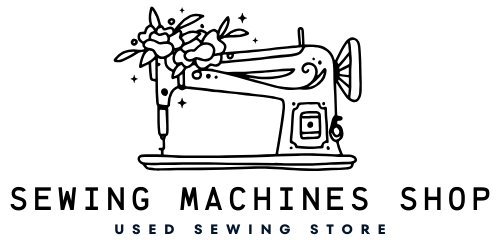Introduction
Sewing machines have come a long way since their early designs, evolving from simple mechanical devices to advanced computerized systems. This evolution has sparked an ongoing debate: Do computerized sewing machines last as long as mechanical ones? While computerized machines offer modern conveniences and sophisticated features, the question of their durability compared to their mechanical predecessors remains a hot topic. Let’s dive into this discussion and explore the key factors influencing the lifespan of these two types of sewing machines.
The Basics: Understanding the Two Types of Sewing Machines
Mechanical Sewing Machines: Tried and True
Mechanical sewing machines represent the classic, reliable choice for many sewists. These machines operate through a series of mechanical parts, such as gears, cams, and levers, which control their functions.
Key Features and Characteristics:
- Manual Operation: Users manually adjust stitch length, width, and tension using dials and levers. This hands-on approach offers a direct, tactile experience.
- Durable Build: Mechanical machines are often built from robust materials like metal, contributing to their long-lasting nature.
- Longevity: Many mechanical machines have been in use for decades, showcasing their durability and reliability.
Computerized Sewing Machines: The Modern Marvel
Computerized sewing machines integrate electronic components and microprocessors to offer a range of advanced features. These machines can automate many tasks, providing a high level of precision and convenience.
Advanced Functionalities and Precision:
- Automated Controls: Features like automatic thread cutting and stitch programming are managed by the machine’s internal computer, which ensures consistent results.
- Built-in Stitches and Designs: Modern machines come with hundreds of stitch options and embroidery designs, enhancing versatility.
- User-Friendly Interfaces: With touch screens and programmable settings, computerized machines are designed for ease of use, even for beginners.
Durability of Mechanical Sewing Machines

The Simplicity of Mechanical Systems
Mechanical sewing machines are renowned for their durability due to their simple design. With fewer electronic components, there’s less that can fail. This simplicity also means repairs are generally straightforward and cost-effective.
Notable Long-Lasting Mechanical Models
Machines such as the Singer 201 and Bernina 930 are celebrated for their long-lasting performance. These models, despite their age, continue to function reliably, often passed down through generations. Their robust build and reliable mechanics contribute to their enduring appeal.
Why Mechanical Machines Are Considered More Durable
Mechanical machines are less prone to the types of failures seen in computerized models. The lack of electronics means there’s no risk of circuit board malfunctions or software issues. Additionally, the sturdy materials used in their construction often ensure they can handle years of regular use.
Durability of Computerized Sewing Machines
The Rise of Technology in Sewing
The introduction of computerized features has brought numerous advantages to sewing, such as precise stitch control and advanced functionalities. However, this technology also introduces potential weaknesses.
Potential Weaknesses in Computerized Models
The complexity of computerized sewing machines means they can be susceptible to electronic failures. Issues such as malfunctioning circuit boards, sensors, or software glitches can impact performance and may require costly repairs. Unlike mechanical machines, these electronic components are not easily replaced by the user.
Examples of Durable Computerized Machines
Despite these concerns, some computerized machines are designed with durability in mind. Brands like Brother, Janome, and Bernina produce high-quality models with robust electronic components. These machines are built to withstand frequent use and often come with extensive warranties to cover potential issues.
Maintenance Needs: A Side-by-Side Comparison
Maintaining a Mechanical Sewing Machine
Routine maintenance for mechanical sewing machines involves cleaning, oiling, and occasional adjustments. These tasks are usually straightforward and can often be performed by the user. Mechanical machines are designed to be durable and require minimal professional servicing.
Maintaining a Computerized Sewing Machine

Computerized machines require more nuanced care. In addition to regular cleaning and oiling, they may need software updates and careful handling of electronic parts. Repairs often require professional assistance, and costs can be higher due to the complexity of the components involved.
The Cost of Repairs
Repair costs for mechanical sewing machines are generally lower compared to computerized models. Mechanical parts are typically less expensive and easier to replace. Conversely, repairs for computerized machines can be costly, especially if they involve major electronic components.
Cost Implications Over Time
The Initial Investment
When purchasing a sewing machine, the initial cost can vary significantly. Mechanical machines are often more affordable, making them a popular choice for budget-conscious buyers. Computerized machines, while more expensive upfront, offer advanced features that can justify the higher price.
Long-Term Ownership Costs
Over time, the costs associated with owning a sewing machine go beyond the initial purchase price. Mechanical machines generally have lower long-term costs due to their durability and ease of repair. Computerized machines might incur higher expenses for maintenance and repairs, especially if electronic components fail.
User Preferences: The Experience Matters
Why Some Users Stick to Mechanical Machines
For many, the appeal of mechanical machines lies in their simplicity and reliability. The direct control and tactile feedback provide a satisfying sewing experience, and the machines’ robust construction ensures they can handle heavy use.
The Draw of Computerized Machines
Computerized machines attract users who value convenience and a range of advanced features. The ability to automate tasks, access a variety of stitches, and utilize modern interfaces makes these machines appealing to those who enjoy experimenting with different sewing techniques.
The Verdict: Which Lasts Longer?
Factors Influencing Durability
Ultimately, the longevity of a sewing machine depends on several factors, including build quality, maintenance, and usage. Mechanical machines generally last longer due to their simpler design and fewer electronic components. However, high-quality computerized machines can also provide many years of reliable service if properly maintained.
Final Thoughts on Longevity
Both mechanical and computerized sewing machines have their strengths and weaknesses. Mechanical machines are known for their durability and simplicity, while computerized models offer advanced features and precision. Choosing the right machine depends on your sewing needs, preferences, and budget.
Choosing the Right Machine for Your Needs

Assessing Your Sewing Goals
Consider what you need from your sewing machine. If you’re focused on basic sewing tasks and durability, a mechanical machine might be the best choice. If you’re interested in advanced features and versatility, a computerized machine could be worth the investment.
Considering Your Budget
Budget plays a crucial role in your decision. Mechanical machines are often more affordable, while computerized models come with a higher price tag. Weigh the initial cost against the benefits and features that are important to you.
Thinking Long-Term
Consider how your sewing needs might evolve. If you anticipate taking on more complex projects, investing in a high-quality computerized machine now might save you from needing an upgrade later. Conversely, if you value simplicity and reliability, a mechanical machine could be a better fit.
Conclusion
When it comes to durability, mechanical sewing machines generally have the edge due to their simple design and robust construction. However, computerized sewing machines offer advanced features that can enhance your sewing experience. Ultimately, the best choice depends on your individual needs and preferences. Consider what features are most important to you and how much you’re willing to invest in a machine that will serve you well for years to come.
FAQs
How long do mechanical sewing machines typically last?
Mechanical sewing machines can last several decades with proper maintenance. Many models from renowned brands are still in use after 50 years or more.
Are computerized sewing machines more prone to failure?
Computerized sewing machines can be more prone to electronic failures due to their complex components. However, high-quality models can also provide long-lasting performance if well-maintained.
Can I repair a computerized sewing machine on my own?
While some basic maintenance can be done by users, major repairs to computerized machines often require professional service due to the complexity of electronic components.
What brands are known for durable sewing machines?
Brands such as Singer, Bernina, Brother, and Janome are known for producing durable sewing machines, both mechanical and computerized.
Should I choose a mechanical or computerized sewing machine for long-term use?
If durability and simplicity are your top priorities, a mechanical machine may be the better choice. If you value advanced features and convenience, a high-quality computerized machine could be worth the investment.
Visit our store for the best sewing machine deals.
For more insightful articles, visit our Medium page !

